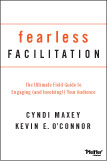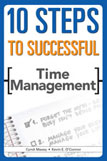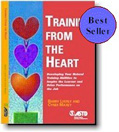Articles
Take Time for An Old Friend
June 30, 2014
by Cyndi Maxey
0 Comment
Good old friends are known to call you out of the blue just to “see how you’re doing” or because they “…just had a feeling” and before you know it you’re transported years back with a person who knew you when.
I just met one of those old friends yesterday – a girlfriend who saw me through braces and crushes and 8th grade graduation when the lipstick was pale and the hair was high. This girlfriend edited the high school yearbook and went on to become a banker and a wife and mother. And then, like most of us…more of life –work, kids, anniversaries, deaths. All of this was mutually updated in an endless stream of conversation as if we’d never left Kingman School.
As business professionals, our current work life friends are important and hopefully fun. In fact, research shows that having a good friend at work motivates and satisfies us. As a coach, I often discuss this with those on their way up - building their networking skills and presence at work. Relationships at work are indeed essential.
But it’s also good for the mind and the spirit to kindle the older longer relationships that make us who we are.
Or as a stone in my garden path states, “ It takes a long time to grow an old friend.â€
And the stone was given to me by – yes… another old friend.

Eric’s Uhm’s Challenge: A Sure-Fire Way to Get Rid of a Nagging Habit
As a speaker coach, one of the most common questions I hear is, “How do I get rid of ‘uhm’s’?” And I usually advise,”They are simply filling pauses. Imagine they are swear words you would be embarrassed to mutter.” That may stop you. Then we play a game where each audience member raises a hand every time the offending speaker says “Uhm.” It is so annoying to the speaker that it often works!
However the BEST TIP on GETTING RID OF UHM’S is from one of my speaking students at Columbia College Chicago - Eric P., a film and video major, who says he practices NOT UHM-ING when he orders in the Subway sandwich line. Try it! Just try ordering your sandwich and all the ingredients without one non-word. Or, for that matter, try it in any fast food line when you’re ordering a long list of items.
If you try “Eric’s Uhm’s Challenge”, let me know how it goes! Creatively yours, Cyndi
When the person being introduced is YOU
Good news:Â The speaker being introduced is you
By JIM KENDALL
This column originally appeared in the March 10, 2014 Daily Herald and is reproduced with permission. Read it and more great articles at the Business Owners Blog http://kendallcom.com/blog/
It’s too late to wonder what you’re doing on the speaker’s side of the microphone: You’ve been introduced to the audience, which has responded with customarily polite applause. It’s time to say something.
That’s good news, though, because a speaking engagement – even one you might have suggested to the program chair – is a not-to-be-wasted opportunity to put yourself and your company in front of a gathering of potential customers, referrers and influencers.
The better news is that Cyndi Maxey, a professional speaker, coach and author, and owner of Maxey Creative Inc., Chicago, is willing to share some thoughts on successful speech giving.
Some of Maxey’s thoughts come from a conversation she and I had last month; others are excerpted from a recent book, “Fearless Facilitation,†she co-authored with Kevin E. O’Connor, also a speaker-author-coach.
For Maxey, a successful presentation begins with the audience. “We don’t think enough about the audience and why they’re there,†she says. “They’re there because they’re looking to be engaged. Think about why you’re giving the speech, the unique value you bring.â€
Your speechmaking moment may be in a workshop at the annual industry convention; following lunch at the chamber meeting; in front of an MBA class as a guest lecturer at the local college; or as part of a group of business leaders brought together to hear your thoughts on quality control issues.
Your value as a presenter could relate to your business’ reputation for outstanding customer service, your concerns about the future of the industry or your role as a non-profit volunteer.
How many people are in the audience doesn’t matter.  “The people in the room are the right people†because they’ve chosen to come, Maxey says.
Maxey gets to know her audience beforehand. “Engage early and often,†she and O’Connor write in their book: Meet and greet before the meeting. Talk with audience members during breaks.
“I walk into the audience,†Maxey says of her presentation style. She engages listeners on those forays, too:
* Raise your hand if (you’re tired of winter, for example).
* Do you know the person on your right? Say hello.
The idea, Maxey says, is to “break through the wall†that almost naturally exists between speaker and audience. Breaking through “makes the rest of the presentation easier.â€
The process works: Learn about the audience, which is there to hear what you have to say. Know your topic, which is why you’re the speaker. Engage. Go for it.
Other tips, from the Maxey-O’Connor book:
* Don’t read your slides, ever. In fact, when the room and audience size allow, “become the master of teaching with a flip chart or whiteboard†rather than a power point presentation.
* Never race through your material because you are short of time. At that stage, no one is listening anyway.
* Never finish late. You will not be forgiven.
Follow Jim Kendall on LinkedIn and Twitter, and at Kendall Communications on Facebook. Write him at Jim@kendallcom.com.
© 2014 Kendall Communications, Inc.
How to Communicate Better in a Social Media World
May I invite you to Speaker Magazine.com to view and comment on my article? You will learn 8 Habits to Help you Communicate Better in a social/media world and some action steps to start today.
http://speakermagazine.com/8-habits-to-communicate-better-in-a-social-media-world/
Your comments are welcomed! Cyndi
Fearless Facilitation – How to Engage and Involve Your Audience
As the workforce ages and younger trainers and managers emerge, facilitation skills take on a new importance and, with the increased use of social networks, new facilitation skills are needed. Written by two facilitation gurus, this book shows how to make any learning environment come alive. It outlines proven guidelines any trainer can use to unify groups, inspire creativity, and get audiences, teams, and colleagues to speak up, talk back, participate, and engage in meetings.
If you are a facilitator with years of experience or just getting started, you will learn what it takes to create and deliver a high-powered presentation that is tailor-made to draw in your audience members and get results every time. Once you set the stage to include and connect with your audience, you will trigger memory and action like never before.
Fearless Facilitation is filled with easy-to-implement presentation techniques designed to appeal to all types of participants. You will learn how to break the “fourth wall” (the invisible wall that separates you from the audience) and engage your audience through dialogue. In addition, the authors show not only how to involve participants in the conversation but also what to do when they grow silent or argumentative.
Throughout the book a personalized “coach” helps you with answers to common questions, specific scenarios, and past nightmare experiences. The coach helps to clarify the text, calm any fear, and take the next right step. And, to further illustrate how to become a skilled fearless facilitator, the book is peppered with interviews with masters of the craft of facilitation and engagement.
Praise for Fearless Facilitation
“Maxey and O’Connor inspire readers to engage with audiences as collaborators. Experienced facilitators will be motivated to take new risks; beginners will feel prepared to actively engage an audience.”
—Kathleen M. Galvin, Ph.D., Communication Studies Department, Northwestern University
“Fearless Facilitation is a blockbuster resource for engaging even the most challenging audience with confidence and purpose.”
—Judy L. Schueler, Vice President and Chief Human Resource Officer, University of Pennsylvania Health System
“Through this book Maxey and O’Connor have actually facilitated a process for you to become a better facilitator. These two not only know what they’re doing, they’ve put together one of the most practical books on the market. Read it and then go facilitate something!”
—Ron Culberson, MSW, CSP, speaker, humorist and author of Do It Well. Make It Fun
208 Pages
Safety Warning: May cause Loneliness or Jealousy
German researchers just discovered that 1 out of 3 people feel worse after visiting Facebook. Specifically, they feel lonely, dissatisfied, and envious.  I could see this coming, couldn’t you? Now, I do have a Facebook page – actually two – one personal page and one to promote a family vacation property that users can “befriend” for discounts.
The research found that vacation photos were the biggest cause of resentment. People’s vacation photos – including my own (!)- should only be available upon request, in my opinion. But then perhaps that’s what my Facebook friends felt when I shared photos of my precious new baby grand nephew, Liam Kenneth, just two months old this week! or the holiday photo of my side of the family and our five squirmy dogs. We all have our weak points.
One of my favorite theories in graduate school was Festinger’s Theory of Social Comparison which basically says that we all feel better about our abilities when we compare ourselves to others. This helps us define ourselves; it reduces our uncertainties. And that is certainly one of the gifts of sites like Facebook – the gift of information giving, receiving, sharing, and comparing with the rest of the world – in particular those who are most like us.
To help us all reap the benefits of social media and avoid the rampant abuse of it, I suggest a SAFETY WARNING like this: CAUTION:may cause loneliness, jealousy, and general malaise if over-used! – followed by a 60 second required training program – NOT in how to operate the tools of TECHNOLOGY but in how to understand the results of SOCIAL COMPARISON.
So, for now, I will participate, but I must say I’m proud of my daughter, a very wise college student, who bucked the trend and put her page on “inactive” status – indefinitely.
As always your comments are encouraged and appreciated.
What I Learn from Porch Doggie
It’s summer – the season when Max Maxey, my beloved yellow Lab becomes “Porch Doggie” nearly every evening. He knows the command, “Max – want to be a porch doggie?” and he gallops to the front door and out on our old fashioned front porch. I sit in the chair and read or work, but mostly I just sit and watch my porch doggie in action.
Because we live in an urban neighborhood, there are lots of people for Max to watch walking by. He has a distinct reaction to each type. Some receive passing interest: a raised eyebrow, one eye open, or a sigh. These folks just don’t stimulate a stronger emotion. Passers by with their own dogs receive a bit more attention – a raised head, erect neck and ears and eyes that follow them along – sometimes with just a little growl of distrust. Then there are the friendly acquaintances who nod or say “Hi!” but keep walking. These folks get a “thump thump” tail wag. Next are the casual friends and neighbors whom we both know better – enough for me to make light conversation and Max to walk down a few steps to sniff - cautiously looking back at me to make sure it’s OK. And last are the good friends – the neighbors we know well – like Bob, who basically gets rushed as Max bounds down the steps, runs in circles around him, and sniffs his dogs and the front parkway grass. Only fully happy when he gets a pat on the head, he comes back up to the porch, but reluctantly, and only when called. Basically, after Bob, there are no better potential passers by of interest in Max’s book.
And so the evening goes until it’s too dark to see or I get bored; Max never gets bored of watching and waiting for whoever is coming by next – canine or human. So what do I learn from my “porch doggie?” Hopefully we humans will never lose the joy of interaction with all kinds of people – from surprise visitors to favorite friends. Hopefully we will look forward to getting out on the front porch as much as Max does – whether it’s a real front porch or the elevator to an apartment or a park bench. And hopefully, we won’t ever rely on only electronic connections to greet, meet, befriend, and know our neighbors. Happy Porch Sitting from me and Max!
Does Anybody Look at Anybody Anymore?
Anyone who flies even infrequently on business knows that air travel is just not what it used to be when it comes to service, roominess, baggage, and the like. Well, actually, anyone who reads the news knows this. But has anyone noticed what’s really happening out there? Here it is: WE THE TRAVELERS have changed. And here’s how: a typical flight will steer us among lots of PEOPLE – waiting, standing and sitting people – at check-in, at the gate, on the plane aisle in and out, in the taxi line, in a restaurant, at the crowded bar, in a small store. In all these settings surrounded by other human beings we rarely look at anybody anymore. Most travelers are eyes down in smart phones, I-Pads, computers, Kindles, Nooks, and now and then the rare paperback or paper newspaper. It is impossible to strike up a conversation unless it’s something like, “What operating system is your phone?” or “Can you get WI-FI here?” Opening lines and icebreakers are forever stilted when you can’t get someone to look up. All in all, this is a depressing development and will damage the already challenged interpersonal skills of today. But I’m taking this all differently. I see this growing inability to look at others as a great opportunity to save money and time because I am going to
-stop putting on make-up
-avoid all clothing trends
-wear only the cheapest suit jackets
-never get my nails done
-stop going to the dentist
-change my hairstylist to the jiffy cut down the street
-refrain from brushing my dog’s hair off my pants before I leave
-no longer worry regarding matching shoes and clothing.
I’ll look forward to a very stress-free, humanity-free, and sadly interest-free trip.
I Love Myself Unconditionally
Summer is the time of garage sales throughout America, and I am one of those who can’t help perusing other people’s stuff. This year I tried to be a discerning shopper, happy to return home from our local neighborhood event with only a barbecue utensil set and a shrimp devein tool. Since I have never cooked shrimp this item is under question, certainly.
The day after the neighborhood sale, the alleys were encumbered with various items which did not sell even at end of day cut rates. As I strolled through the alley near us after a morning jog, my eyes caught an unusual item: a post it note stuck to the top of a small three-drawer dresser. On closer look the little dresser was somewhat but not terribly worn, a bit warped on the top, and, upon a tug, doors that stuck just a bit. All in all it was a serviceable item, and I remembered seeing it with a $20.00 price tag the day before. Then I read the post it note, hastily written in ink, and stuck on the top of the chest by the previous owner, ” I love myself unconditionally,” the note said. And I smiled and picked up the chest and carried it to my garage. Surely someone in my family would find a use for an item so cared for.
I couldn’t help but thinking of the note and the chest and the warmth of the note the rest of the day. And so my wish to you and me and all of us is to mentally wear the same note…all the time, “I love myself unconditionally, ” no matter how the day wears us or warps us or tugs at our once nicely fitted plans.
As always, your comments are appreciated!
About CYNDI
Have you ever wished you had planned a bit more for that major presentation? Would you like to overcome speaking anxiety that holds you back? Could you benefit from higher level influence in front of groups? Coach Cyndi Maxey helps you answer those questions and more. She is an accomplished national speaker and communication coach who has authored six books on communication, presentations, and influence.
Books
Fearless Facilitation “How to Engage and Involve Your Audience”

Present Like a Pro: The Field Guide to Mastering the Art of Business, Professional, and Public Speaking

Speak Up! A Woman’s Guide To Presenting Like a Pro

10 Steps to Successful Time Management

It’s Your Move: Dealing Yourself the Best Cards in Life and Work

Training from the Heart: Developing your Natural Training Abilities to Inspire the Learner and Drive Performance on the Job

Focus on Fearless Facilitation

This popular and most recent book shows how to make any learning environment come alive. It outlines proven guidelines any trainer can use to unify groups, inspire creativity, and get audiences, teams, and colleagues to speak up, talk back, participate, and engage in meetings

What people are saying:
"This product is quality. I like the format."
"A lot to learn. Highly recommended"
"A Must read for Talent Development professionals."
"One of the best books on facilitation I have read"
Recent Comments
- Cyndi Maxey on PORCH STORY
- Barbara Willard on Safety Warning: May cause Loneliness or Jealousy
- Barbara Willard on PORCH STORY
- Cyndi Maxey on PORCH STORY
- Dolores Rodriguez on PORCH STORY
Contact
Phone: 773-551-9599
Email: cmaxey@cyndimaxey.com
Email: cmaxey@cyndimaxey.com
Join Our Mailing LIst
Copyright © 2025 Cyndi Maxey
